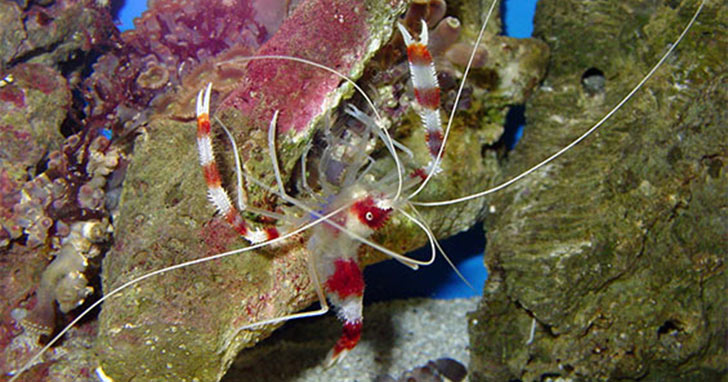Marine Shrimps - An Introduction
By Scott W. Michael
The Crustaceans are one of the most popular invertebrate groups with scuba divers, underwater photographers and chefs. Many are odd in form, display beautiful color patterns, exhibit interesting life history modes and some are good to eat! Of all the crustaceans, the shrimps are probably the most popular with aquarists, and for good reason. Most of the shrimps tend to be less destructive than their crustacean cousins. There are also a number of shrimp species that are brightly colored, interesting to watch and they tend to be less secretive than certain crabs and lobsters. Some shrimps are also sought after because of the valuable services that they provide for the aquarium or their tankmates. In this article series, we will examine the biology and captive care of the decapod shrimps that are available to aquarists. Hopefully, this article will facilitate your efforts to select a shrimp that is right for your aquarium and aid you in keeping them healthy.
The trunk (which can be further divided into the thorax and the abdomen) is usually covered with a carapace, which encloses the entire body. The carapace serves as protection from at least some predators. The trunk has numerous pairs of legs, which are important in food gathering, swimming, crawling, sperm transmission and egg brooding. There are also appendages under the abdomen called pleopods or swimmerets. These are used for swimming, for brooding eggs and during copulation. The tail of the shrimp is comprised of a telson and flattened appendages known as uropods, and is used when they swim backwards. The decapods have maxillipeds (these are the first three thoracic appendages), and five pairs of legs. In the shrimps, there are pincers on the first two or three pair of legs. The gills of the decapods are located within branchial chambers under the fused head and thoracic carapace. The shrimps and lobsters have long abdomens, while crabs have a small abdomen that is folded under the rest of the body. The decapod shrimps should not be confused with other crustaceans that are called shrimp (e.g., mantis shrimps, mysid shrimps).
 Scott Michael
Scott MichaelScott W. Michael is an internationally-recognized writer, underwater photographer, and marine biology researcher specializing in reef fishes, and was the Banquet Speaker at our 2007 and 2008 Coral Conference and Frag Swap. He is a regular contributor to Aquarium Fish Magazine, Freshwater and Marine Aquarium Magazine, SeaScope, and is the author of Reef Fishes Vol 1, Vol 2, and Vol 3, Vol 4, and Vol 5., A Pocket Expert Guide Marine Fishes, A Pocket Expert Guide to Reef Aquarium Fishes, 101 Best Saltwater Fishes: How to Choose and Keep Hardy, Brilliant, Fascinating Species That Will Thrive in Your Home Aquarium, Reef Sharks & Rays of the World, and Aquarium Sharks & Rays. Having studied marine biology at the University of Nebraska, Scott has served as a scientific consultant for National Geographic Explorer, the Discovery Channel, and French educational television. Resources Debelius, H. 1999. Crustacea Guide of the World. IKAN, Frankfurt, Germany, 321 Pp. Fossa, S. A. and A. J. Nilsen. 2000. The Modern Reef Aquarium. Volume 3. Birgit Schmettkamp Verlag, Bornheim, Germany, 448 Pp. Hoover, J. P. Hawaii's Sea Creatures. Mutual Publishing, Honolulu, Hawaii, 366 Pp. |
||||||
|
|




